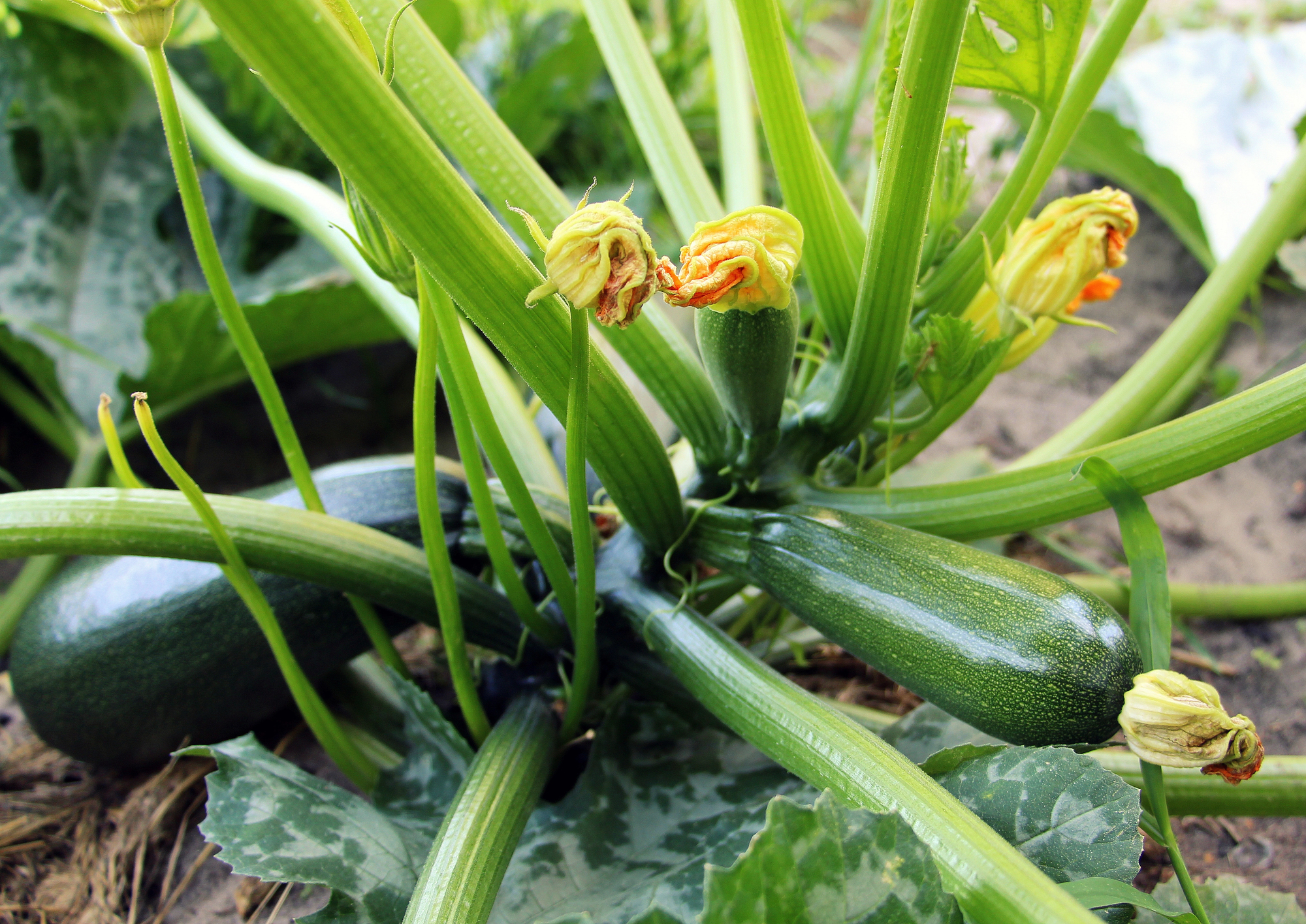Zucchini & Summer Squash Donation Tracker
Quick Links: How & Where to Grow | Temperature | How to Care For | Harvest Signs | Harvesting | Pruning | Pests | Companions | Varieties | Preservation | Recipes | Michigan Tips | Fun Facts
🌱 How & Where to Grow Zucchini:
- Direct sow when soil reaches 60°F or start indoors 3-4 weeks early.
- Space plants 3-4 feet apart – they need room to sprawl!
- Plant 2-3 seeds per hill, thin to strongest seedling.
- Sunlight: Full sun (6-8 hours) for best production.
- Soil Type: Rich, well-drained soil with pH 6.0-7.5.
- Soil Amendment: Add generous compost – zucchini are heavy feeders
One healthy zucchini plant can feed a family – two plants will have you begging neighbors to take them!
🌡️ Temperature Guidance:
Wait for consistent 60°F soil. Ideal 70-85°F. Use black plastic.
- Planting: Minimum 60°F soil, 70°F is ideal.
- Growing: Thrives in 70-85°F temperatures.
- Very frost sensitive – even light frost kills plants.
- Cool nights below 50°F slow growth significantly.
Michigan tip: Late May to early June planting avoids cold soil and vine borer peak!
💧 How to Care for:
- Consistent Moisture: Essential for continuous production.
- Watering: 1-2 inches weekly at soil level – avoid wetting leaves.
- Mulch: Heavy mulch suppresses weeds and retains moisture.
- Fertilizer: Side-dress monthly with compost or balanced fertilizer.
- Pollination: Hand-pollinate if fruit drops – transfer pollen with brush.
📏 Harvest Signs:
6-8 inches long, tender skin. Daily harvest crucial!
- Check plants EVERY DAY during peak season – they grow incredibly fast!
- Best size: 6-8 inches long, 2 inches diameter.
- Skin should be glossy and easily pierced with fingernail.
- Oversized zucchini become watery and seedy.
That 8-inch zucchini will be baseball bat-sized in 2 days – harvest often!
🧺 Harvesting:
Cut stem with knife. Check under leaves. Harvest young for best flavor.
- Always cut, don’t twist – twisting damages vines.
- Leave 1-inch stem on fruit for better storage.
- Check carefully – zucchini hide under huge leaves.
- Harvest blossoms too – male flowers are edible delicacies!
- Regular harvesting keeps plants producing all season.
✂️ Pruning:
Remove lower leaves. Cut damaged foliage. Optional: limit fruits.
- Remove lower leaves touching ground to prevent disease.
- Cut out any powdery mildew affected leaves promptly.
- Hollow stems make great hiding spots for squash bugs – remove old stems.
- For larger fruit: Limit to 3-4 fruits per plant.
- Improve airflow by removing some interior leaves in humid weather.
🪲 Michigan Pests:
Vine borers (plant after June 15), squash bugs, cucumber beetles.
- Squash vine borers – most devastating! Plant after June 15 to avoid.
- Squash bugs – check for bronze eggs under leaves, destroy immediately.
- Cucumber beetles – spread bacterial wilt. Use row covers early.
- Powdery mildew – inevitable by late summer. Plant resistant varieties.
🫱🏽🫲🏼 Companions:
Nasturtiums, marigolds, beans, radishes. Avoid other cucurbits.
- Nasturtiums act as trap crop for aphids and beetles.
- Radishes repel cucumber beetles when planted nearby.
- Beans fix nitrogen for heavy-feeding squash.
- Marigolds help deter various pests.
- Avoid planting near other squash family members – shared pests.
🥒 Varieties:
‘Black Beauty’, ‘Costata Romanesco’, ‘Golden Glory’.
- ‘Black Beauty’: 50 days, classic dark green, heavy producer.
- ‘Costata Romanesco’: 52 days, Italian heirloom, ribbed, nutty flavor.
- ‘Golden Glory’: 50 days, bright yellow, easier to spot for harvest!
- ‘Eight Ball’: 40 days, round fruit perfect for stuffing.
- ‘Defender’: 57 days, powdery mildew resistant.
🫙 Preservation:
Freeze blanched slices. Grate and freeze. Dehydrate. Pickle.
- Freezing slices: Blanch 3 minutes, freeze on trays, then bag.
- Grated: Freeze in measured portions for winter baking.
- Dehydrated: Make zucchini chips or powder for soups.
- Pickled: Bread and butter pickles using zucchini!
- Canned: Only in tested relish or pickle recipes.
- Fresh: Stores only 1 week – use quickly!
🧑🏽🍳 Recipes:
Zucchini bread, chocolate muffins, fritters, carpaccio.
- Classic zucchini bread – uses 2 cups grated zucchini.
- Chocolate zucchini muffins – kids never know!
- Zucchini fritters with herbs and feta.
- Raw zucchini ribbons for “pasta” or salads.
- Stuffed zucchini boats with quinoa or rice.
✋🏼 Michigan Tips:
- Plant after June 15 to avoid vine borers.
- Use row covers until flowering.
- Succession plant every 2 weeks through July.
- Choose powdery mildew resistant varieties.
- Hill planting improves drainage in clay soil.
- Late planting (July) extends harvest into fall.
🧠 Fun Facts:
- Flowers edible.
- One plant produces 6-10 pounds.
- World record 69+ pounds!
- Zucchini is Italian for “little squash” – only called this in North America.
- Botanically a fruit, legally a vegetable.
- Dark green varieties have more nutrients than light.
- August 8th is “Sneak Some Zucchini Onto Your Neighbor’s Porch Day”!
- Zucchini wasn’t popular in the US until the 1920s when Italian immigrants introduced it.


0 Comments